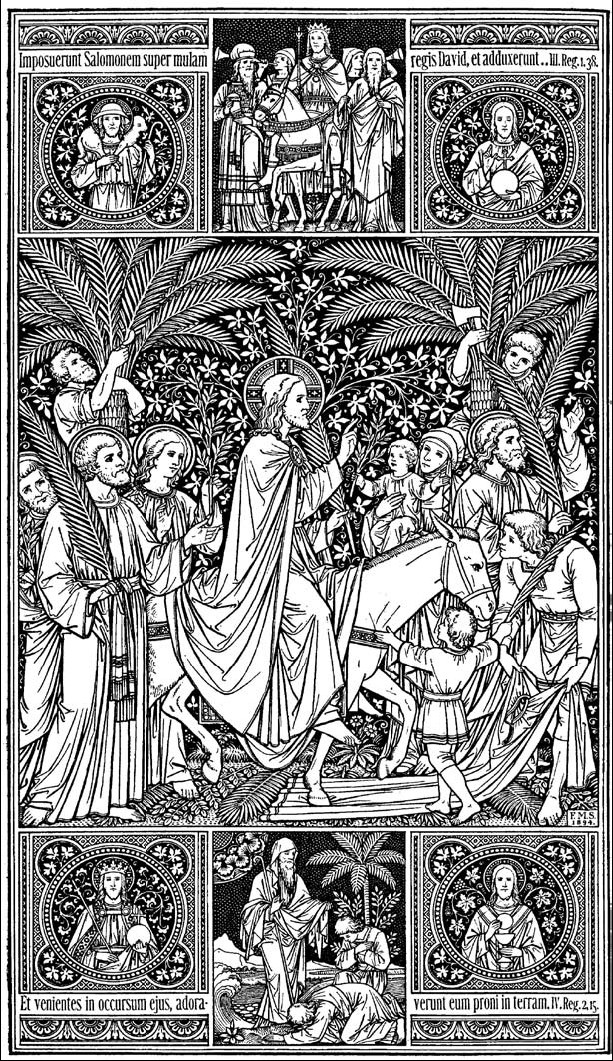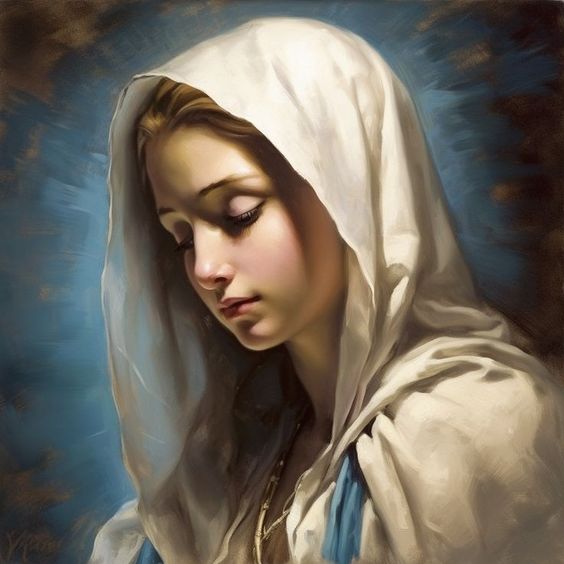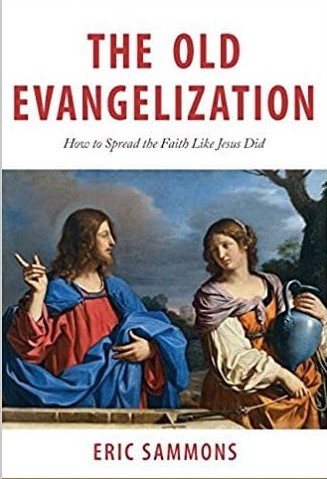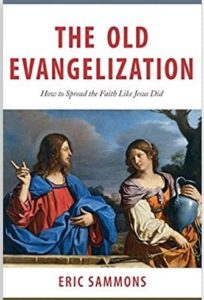According to Matthew 21:10-17, Mark 11:15-17, and Luke 19:45-46, Jesus returns to Jerusalem today. Seeing shameful practices in the Temple area, He cleanses it. The Gospels also recount His weeping over Jerusalem and His cursing of the fig tree. Matthew and Mark relate that He returned to Bethany that night. Let’s look to the details.
Prelude: The Scriptures record that Jesus went to Bethany on the Sunday evening after His triumphal entrance into Jerusalem (Palm Sunday):
[Jesus] went into the temple courts. He looked around at everything, but since it was already late, He went out to Bethany with the Twelve (Mk 11:11).
It is likely that Jesus stayed at the house of Martha, Mary, and Lazarus. Bethany was a mere two miles from Jerusalem (though a steep climb), just over the Mount of Olives.
Pain: The next morning (Monday) Jesus arises and goes back toward Jerusalem. Luke records that as He came over the crest of the hill on the Mount of Olives He wept:
As Jesus approached Jerusalem and saw the city, He wept over it and said, “If only you had known on this day what would bring you peace! But now it is hidden from your eyes. For the days will come upon you when your enemies will barricade you and surround you and hem you in on every side. They will level you to the ground—you and the children within your walls. They will not leave one stone on another, because you did not recognize the time of your visitation from God” (Lk 19:41-44).
Today on this spot there is a chapel named Dominus Flevit (the Lord wept), which is in the shape of a teardrop. From here Jesus could see the whole city spread out below. He could also see forty years into the future to the time when the Romans would destroy the city and Temple, the culmination of a horrible and pointless war (64-70 A.D.) for liberation from the Romans. Had Jesus’ message been heeded, the Romans would not have been regarded as enemies to kill but rather as brothers to convert to the gospel.
Passionate Anger: Mark recalls an event as they come down the hillside:
The next day, when they had left Bethany, Jesus was hungry. Seeing in the distance a fig tree in leaf, He went to see if there was any fruit on it. But when He reached it, He found nothing on it except leaves, since it was not the season for figs. Then He said to the tree, “May no one ever eat of your fruit again.” And His disciples heard this statement (Mk 11:12-14).
The fig tree is widely interpreted as representing the Jewish people. The Lord looked for fruits among His chosen people but found none. Jesus’ rebuke of the tree illustrates His righteous anger at and disappointment in their lack of the fruits of faith. Scripture says elsewhere,
And the men of Judah are [the Lord’s] pleasant planting; and he looked for justice, but behold, bloodshed; for righteousness, but behold, the outcry! (Is 5:6-7)
And Jesus told this parable: “A man had a fig tree planted in his vineyard, and he came seeking fruit on it and found none. And he said to the vinedresser, ‘Look, for three years now I have come seeking fruit on this fig tree, and I find none. Cut it down. Why should it use up the ground?’ And he answered him, ‘Sir, let it alone this year also, until I dig around it and put on manure. Then if it should bear fruit next year, well and good; but if not, you can cut it down’” (Luke 13:6-9).
Seeing no fruit in this last hour, Jesus in effect finishes the parable. The hour of judgment has come upon ancient Judah.
Many misunderstand the phrase that it was “not the season for figs,” falsely concluding that it was thus “unfair” to expect figs on the branches. However, it is for this very reason that one would expect to find figs growing in the branches, for if it were the harvest one would expect bare branches as the figs would have just been harvested. It is before the harvest that one expects to find figs, even if not fully ripe, growing in the branches. Seeing nothing but leaves, Jesus curses the tree.
Pivotal Event: The cleansing of the Temple was indeed a pivotal event. Here is Mark’s account:
And they came to Jerusalem. And he entered the temple and began to drive out those who sold and those who bought in the temple, and he overturned the tables of the money-changers and the seats of those who sold pigeons. And he would not allow anyone to carry anything through the temple. And he was teaching them and saying to them, “Is it not written, ‘My house shall be called a house of prayer for all the nations’? But you have made it a den of robbers.” And the chief priests and the scribes heard it and were seeking a way to destroy him, for they feared him, because all the crowd was astonished at his teaching (Mk 11:15-18).
The Lord’s grief and anger grow worse as He enters the Temple. What made him so angry? Mark’s Gospel states the reason most clearly: It is not the selling of animals (which were needed for the sacrifices) per se, but that they were being sold in a part of the Temple grounds reserved for the Gentiles to pray. This is an insult and amounts to a denial that the prayers of the Gentiles mattered at all. Jesus was about to die in order to reunite God’s scattered children. And I, when I be lifted up from the earth, will draw all people unto me (Jn 12:32).
As for the Temple being a den of robbers, the implication is that the dealings there are unjust and exploitative.
Why is this a pivotal moment? The action of Jesus is a prophetic judgment made in the very center of the Temple leaders’ power. The Temple was the locus of their power and prestige. It is not lost on them for a moment that Jesus has threatened all of this, not merely by what He has said but by his popularity among the people.
According to John’s Gospel (which actually remarks on this earlier in Jesus’ ministry), when the Temple leaders demanded a sign and an explanation for this action Jesus said,
Destroy this temple, and in three days I will raise it up again.” “This temple took forty-six years to build,” the Jews replied, “and You are going to raise it up in three days?” But Jesus was speaking about the temple of His Body (Jn 2:19-21).
This had a further impact on the Temple leaders, who would later accuse Jesus (at His trial) of threatening to destroy the temple (e.g., Mk 14:58).
Theologically, Jesus is saying that Temple worship is over. He is the temple. He is the priest. He is the lamb. It is His blood that will cleanse us. Temple worship is ended because what it pointed to (Jesus) is now here. Its purpose is fulfilled in Him.
Quite a day, this Monday of Holy Week! Can you sense the grief and anger of the Lord? Remember, His anger is a righteous one. Everything was being fulfilled for the ancient people, but many are rejecting the very one God has sent to save them. Jesus cannot remain indifferent to their tragic rejection. He both weeps and has a grieving anger.
Do we weep for the condition of our world? Do we pray and seek to call forth the fruits of faith, justice, and truth?
Jesus does not give up. He will spend the next day teaching and seeking to win as many as possible to the truth of the gospel.
The Scriptures conclude Monday of Holy Week in this way:
And he left them and went out of the city to Bethany, where he spent the night (Matt 21:17).
Perhaps Jesus is consoled in His grief and anger by the presence of friends like Martha, Mary, and Lazarus. Perhaps He finds solace in the company of His apostles and others. Scripture says,
A faithful friend is a sturdy shelter:
he that has found one has found a treasure.
There is nothing so precious as a faithful friend,
and no scales can measure his excellence.
A faithful friend is a medicine of life;
and those who fear the Lord will find him (Sirach 6:14-16).
Stay close to the heart of the Lord. Be His “consolation.” Be the reparation for the rejection by so many others.









